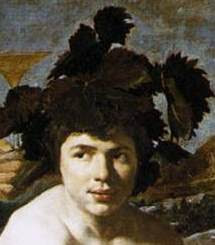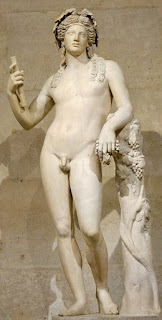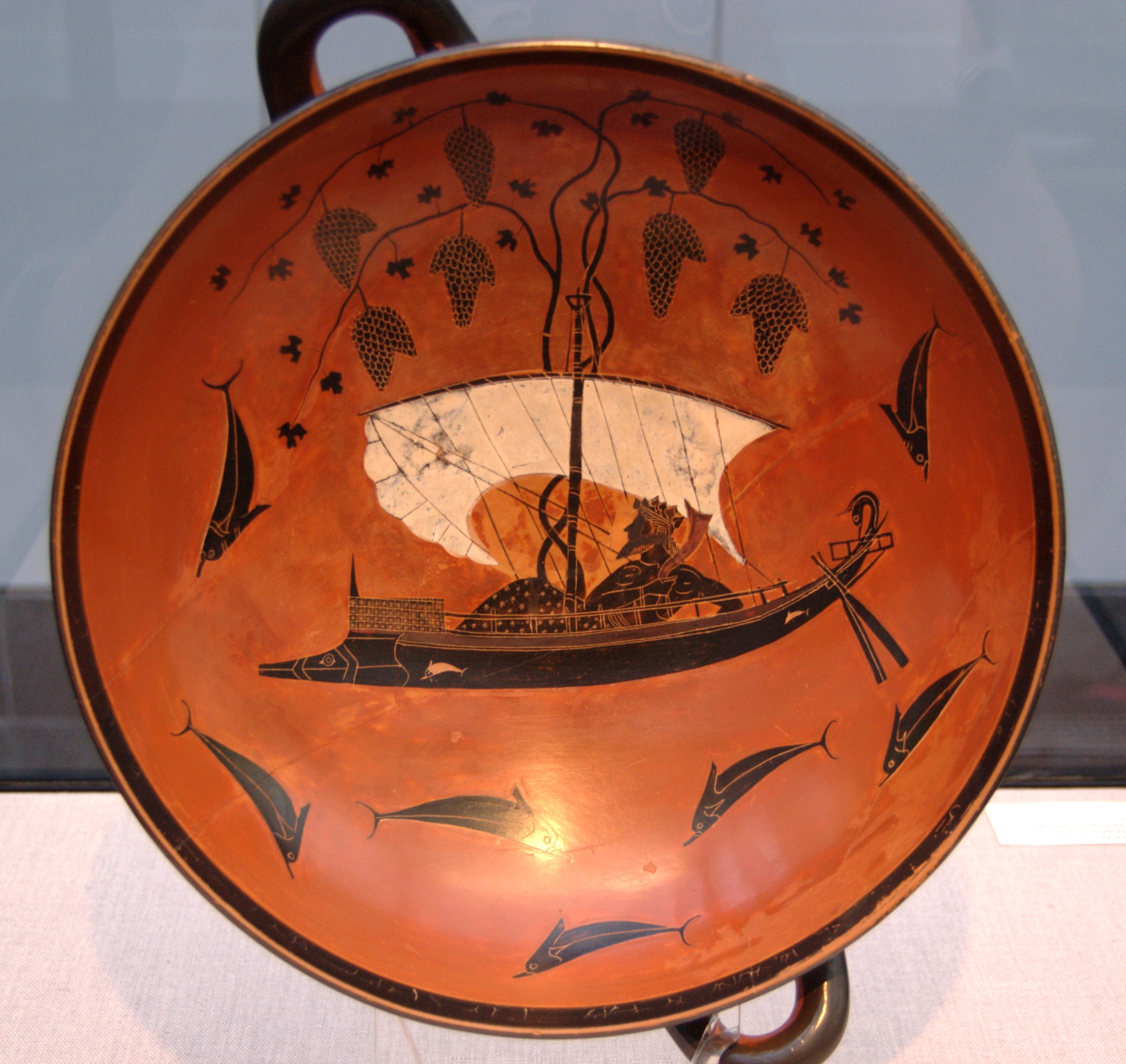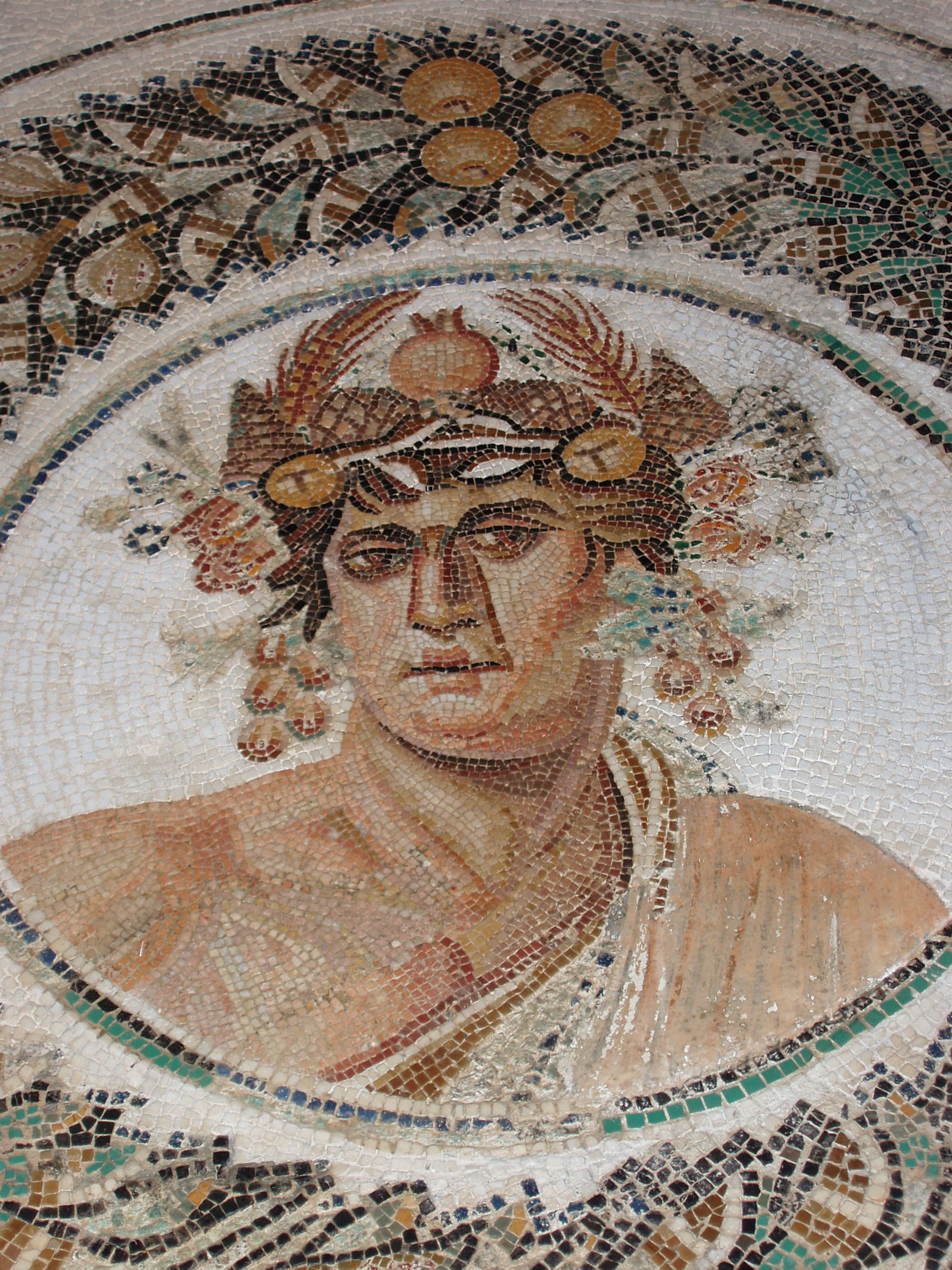Friday, January 29th, 2010
Bacchus/Dionysus in Classical Art
 I was recently asked a question something like, “If you had to choose a favorite god or goddess from ancient Greek/Roman mythology, who would it be?” I quickly answered Bacchus (Dionysus), the god of wine. It’s not because I’m into bacchanalian parties (I don’t even drink!) or Dionysiac cults, but Bacchus just seems like he’d be a really entertaining friend. I bet that guy can be funny-on-command.
I was recently asked a question something like, “If you had to choose a favorite god or goddess from ancient Greek/Roman mythology, who would it be?” I quickly answered Bacchus (Dionysus), the god of wine. It’s not because I’m into bacchanalian parties (I don’t even drink!) or Dionysiac cults, but Bacchus just seems like he’d be a really entertaining friend. I bet that guy can be funny-on-command.
Anyhow, I started to think of all of the depictions of Bacchus/Dionysus in art. Since my speciality is in 17th century art, it’s not surprising that I first thought of art created in the Renaissance/Baroque periods: Michelangelo’s Bacchus (1497), Caravaggio’s Bacchus (c. 1596), Caravaggio’s Sick Bacchus (c. 1593), Velazquez’ The Triumph of Bacchus (c. 1629; see detail above), and Titian’s Bacchus and Ariadne (1520-22). While researching for this post, I also came across a fun depiction of a hefty Bacchus (1638-40) by Rubens. I think it might be my new favorite Bacchus painting, partially because the god’s face and girth remind me of a physics teacher from my old high school.
 But what about ancient art? What about depictions of Bacchus/Dionysus by the Greeks and Romans themselves? I had a hard time thinking of many examples, which is partially because it’s outside my realm of expertise. I did think of three examples, though. Praxiteles’ Hermes and the Infant Dionysus (marble copy after an original of 340 BC, shown right) would have been fun to see in its pre-damaged state, since Hermes was originally dangling a bunch of grapes to tease the infant god of the vine. I also thought of the Dionysiac Mystery Frieze (Villa of the Mysteries, Pompeii, Italy, ca. 60-50 BC) and figure from the Parthenon which might be Dionysus (ca. 438-432 BC). These depictions are are a little disappointing though, since they are both damaged. (P.S. Can anyone identify the head with the bulging eyeballs on the left of the Dionysiac wall? I can’t figure it out.)
But what about ancient art? What about depictions of Bacchus/Dionysus by the Greeks and Romans themselves? I had a hard time thinking of many examples, which is partially because it’s outside my realm of expertise. I did think of three examples, though. Praxiteles’ Hermes and the Infant Dionysus (marble copy after an original of 340 BC, shown right) would have been fun to see in its pre-damaged state, since Hermes was originally dangling a bunch of grapes to tease the infant god of the vine. I also thought of the Dionysiac Mystery Frieze (Villa of the Mysteries, Pompeii, Italy, ca. 60-50 BC) and figure from the Parthenon which might be Dionysus (ca. 438-432 BC). These depictions are are a little disappointing though, since they are both damaged. (P.S. Can anyone identify the head with the bulging eyeballs on the left of the Dionysiac wall? I can’t figure it out.)
With only those few examples in mind, I began a quest to familiarize myself with depictions of Bacchus/Dionysus in classical art. I ended up finding a couple of fun examples that I thought I’d share:
 Dionysus (2nd century AD; Roman copy after Hellenistic model, Louvre, Paris)
Dionysus (2nd century AD; Roman copy after Hellenistic model, Louvre, Paris)
Dionysus (460 BCE; Louvre, Paris)
This is thought to be one of the earliest depictions of Dionysus as a young man (see here)
 Exekias, Dionysus in a Ship, Sailing among Dolphins (Attic black-figure kylix; ca. 530 BC; Vulci)
Exekias, Dionysus in a Ship, Sailing among Dolphins (Attic black-figure kylix; ca. 530 BC; Vulci)
I actually remember seeing this vase in a course on ancient Greek art. It’s a good example of how early Christians picked up on the reclining figure of Dionysus and reused that imagery in the figure of Jonah (see bottom scene from the ceiling painting in the Catacomb of Saints Peter and Marcellinus, Rome, Italy, early 4th century)
 Bacchus, (3rd century, Roman mosaic, El Jem Museum, Tunisia)
Bacchus, (3rd century, Roman mosaic, El Jem Museum, Tunisia)
 The Birth of Dionysus (ca. 405-385 BC, Greek, National Archeological Museum in Taranto, Italy)
The Birth of Dionysus (ca. 405-385 BC, Greek, National Archeological Museum in Taranto, Italy)
According to mythology, Dionysus was born out of Zeus’ thigh. I love this vase painting – check out Dionysus’ cute lil’ postnatal wreath!
What a fun question!
I'd say that my favorite goddess is Demeter. I just really love that she controls the seasons, and that the seasons happened in response to her overwhelming agony at losing her daughter (winter), and then her joy when she returns (spring). I like that ancient greeks answered the question of why there were seasons in such a way. I love that kind of emotion and passion!
I also really, really like Athena. Even though that's quite cliche.
In terms of Dionysus, that black sculpture of him is so beautiful. I also liked reading the description of it in the link you gave.
I have no idea who the guy with the bulging eyes is. Maybe a satyr? There was a really good website for this fresco somewhere; I'll try to find it.
My favorite deity in classical art has to be Medusa. I love how her image evolves over time.
Aha! Found it: a "young satyr holds a theatrical mask (resembling the Silenus) aloft and looks off to his left. Some speculate that the mask rather than the satyr's face is reflected in the silver bowl. So, looking into the vessel is an act of divination: the young satyr sees himself in the future, a dead satyr."
Here's the URL: http://www.art-and-archaeology.com/timelines/rome/empire/vm/villaofthemysteries.html
Hey! Thanks for the info heidenkind. That quote about the mask/reflection makes a lot of sense to me. Now I'll be able to sleep at night. 🙂
I like Demeter and Medusa, too. I also like how the Greeks explained seasonal changes through Demeter's grief at being separated from Persephone.
Oh, Medusa! That reminds me that when I was in the 4th or 5th grade, I dressed up as Medusa for Halloween. My mom made an awesome wig for me that had gummy worms in it (representing snakes).
Greek mythology really is so fun. And there is art for ALL of it!
I'm currently wriiting an essay for my art history course on Dyonysus/bacchus and have been aimlessly wandering through websites. And look!! I've found this! How wonderful. I love how every diety could suddenly change into anything that suited. Dyonysus certainly knew how to party with the best of them. However I must remain within classical/hellenistic Greek art but my favourite has to be the fabulous Caravaggio.
A obession that began last year in Rome…………………
Get back to essay writing Lou!!!
Thank you for this blog – am so glad i've discovered it.